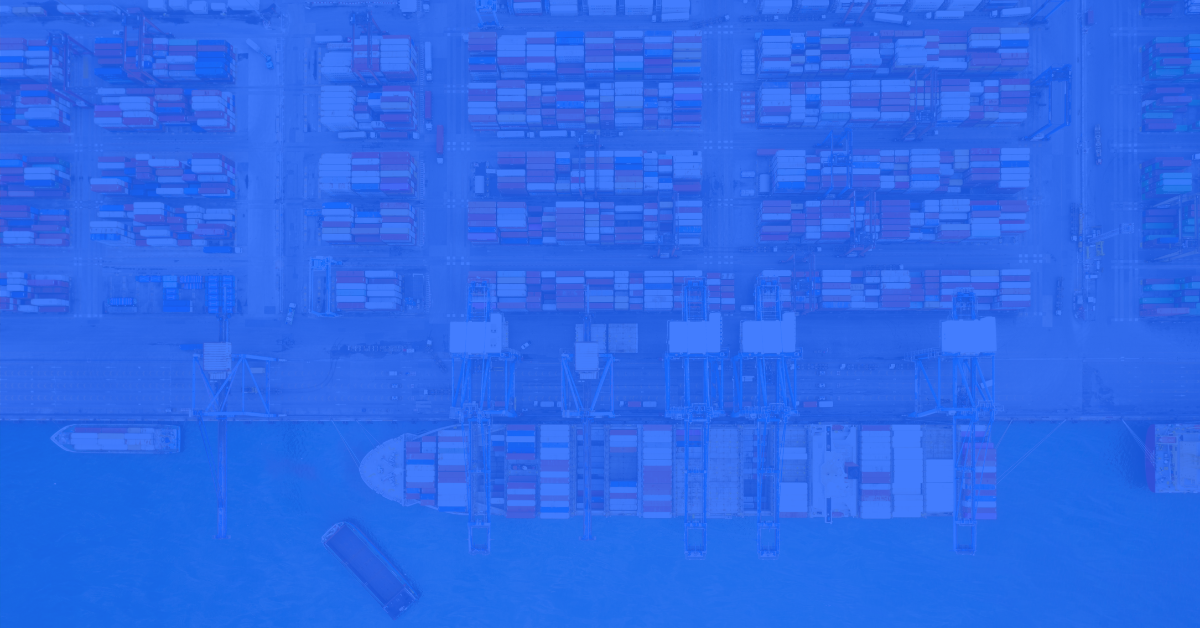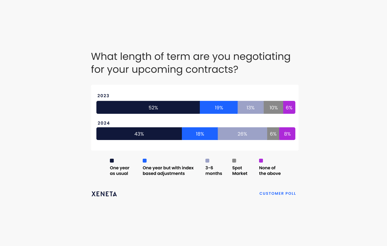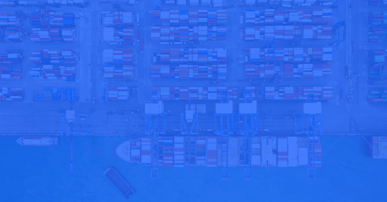Every month, our Xeneta industry experts host a customer-exclusive webinar, Ocean Freight Pulse, where they uncover the stories behind industry headlines. Together with our customers, they discuss the most pressing problems and notable market movements.
In the latest edition, we discussed how this new market dynamic would affect container rates and test the relationship between shippers and freight forwarders.
Here are key insights from our latest' Ocean Freight Market Pulse' webinar.
Key Highlights | Xeneta Customers Say
Which way will the market go? 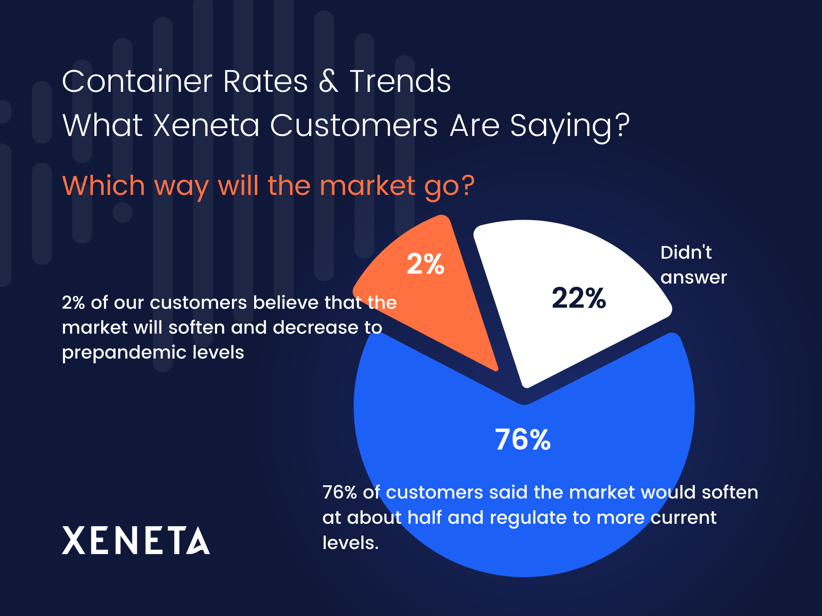 To re-negotiate or not: That is the question!
To re-negotiate or not: That is the question!
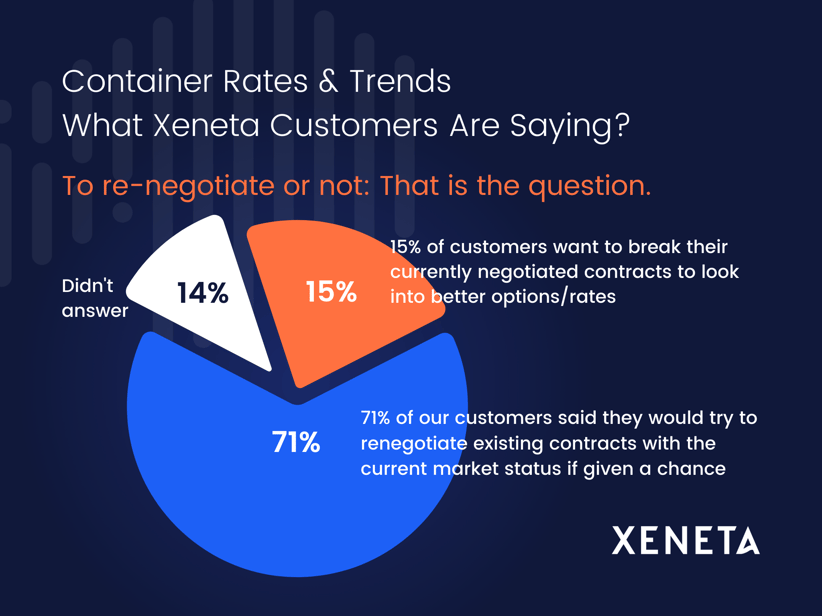 Omicron Lockdown In Shanghai And Other Global Events Further Driving Disruptions
Omicron Lockdown In Shanghai And Other Global Events Further Driving Disruptions
Shipping continues to be at a near-standstill in and out of Shanghai, forcing most shippers to be patient and wait out the delays of the lockdown. These delays are likely to affect other areas of China as well, such as Shenzhen.
"China's zero-tolerance policy on COVID continues to disrupt supply chains, as demonstrated by the lockdown in Shanghai, the world's largest port," noted the Xeneta CEO Patrik Berglund, referring to the data from the latest Xeneta Shipping Index (XSI®) Public Indices for the contract market.
"That is hitting exports, which could obviously free up capacity and put pressure on spot rates. However, proactive carriers are moving to protect their dominant positions, as we can see with the 2M alliance aiming to blank three Far East-North Europe sailings in May. They are not alone in this response to what is, in these times, a rare crack in otherwise solid market fundamentals."
Also, due to the ongoing Russia Ukraine war, many ships are still waiting at the port, and there is a sharp decrease in ship calls in the Baltic and Black Seas.
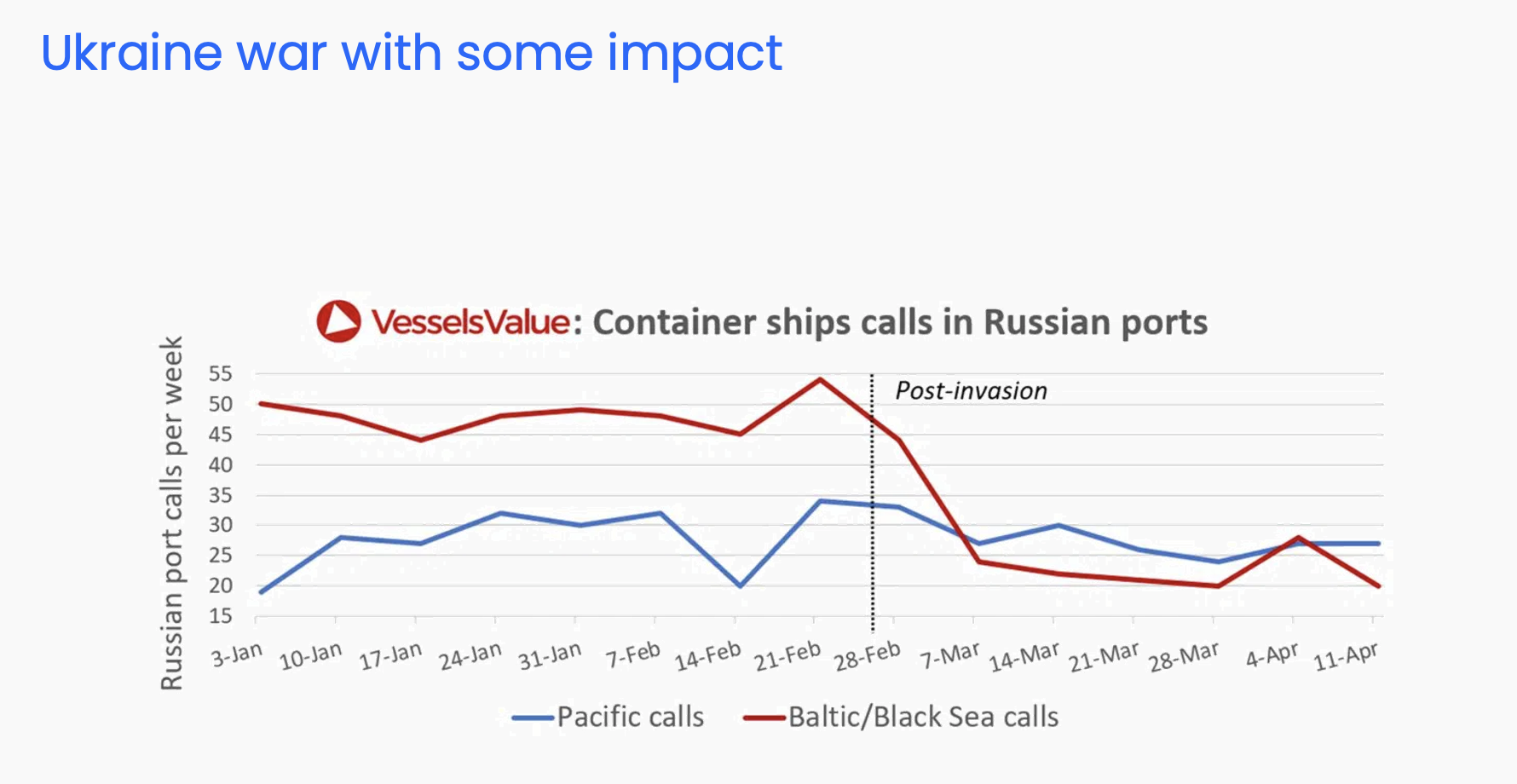 Massive Capacity Shift To US East Coast Causing Further Congestion
Massive Capacity Shift To US East Coast Causing Further Congestion
US east coast congestion is expected to worsen. Volumes from the Far East are shifting towards being imported via the US East Coast. In the first two months of the year, imports from the Far East were up by 6.8%, while those to the West Coast were down 8.8%. The congestion and threat of further problems due to labor negotiations make the East Coast more attractive.
In response to this shift, carriers are adjusting their capacity offerings, adding sailings towards the East Coast. However, as volumes move over here, congestion becomes a growing problem on East Coast, affecting imports from the rest of the world to the USEC.
Capacity being added to both the East and West Coasts is a good sign that things are moving in the right direction. However, it may be worth the gamble for shippers to spread their volume across both coasts, as things are improving on the West.
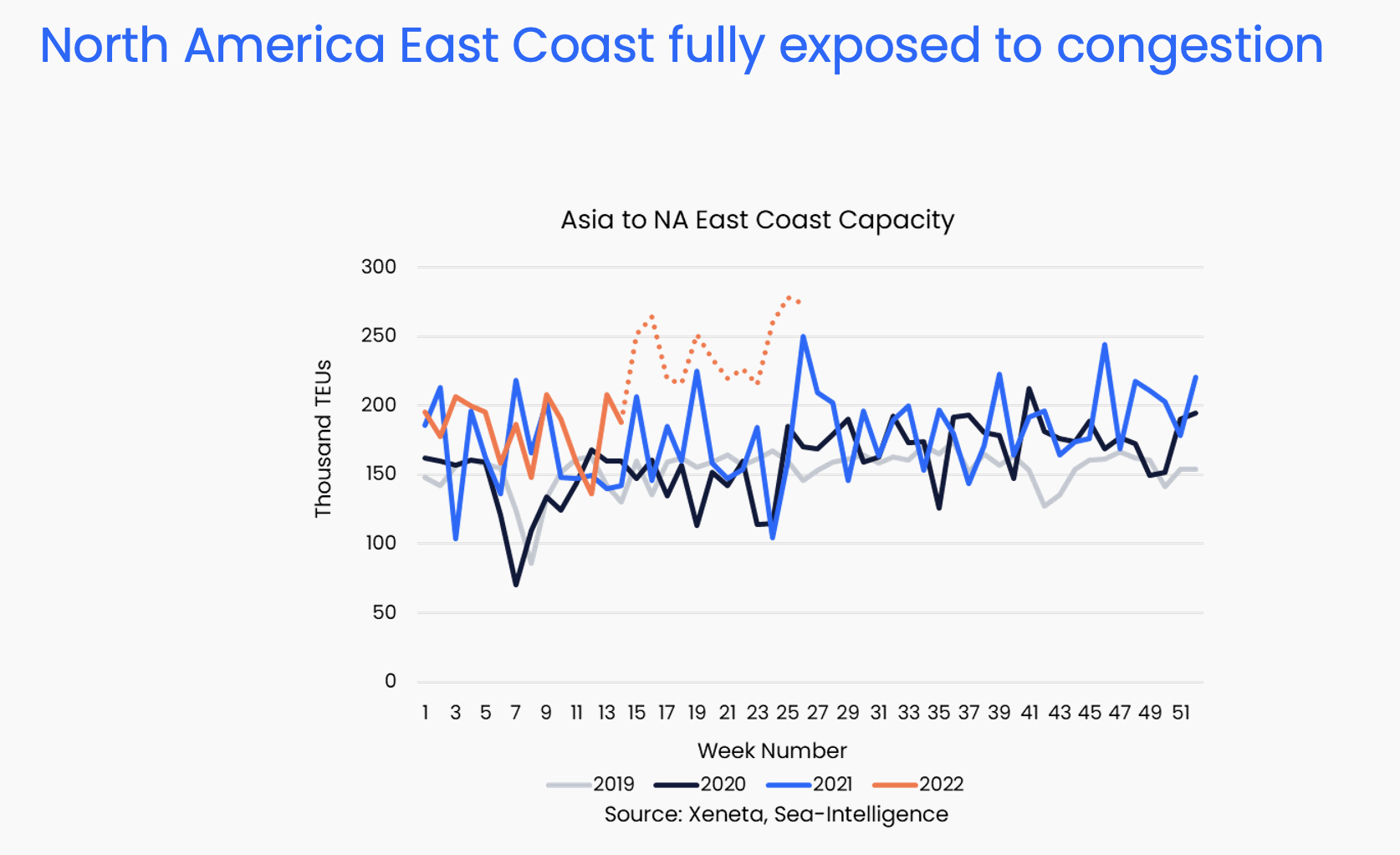 Global Inflation Could Impact The Global Demand
Global Inflation Could Impact The Global Demand
Though some main trades are softening, the market as a whole is still at a historically high level. Demand growth has slowed since mid-2021 and is now decreasing to a negative for YoY growth.
April saw the third consecutive monthly climb in long-term contracted ocean freight rates, with shipping costs rocketing by 11.1% globally to stand 109.9% up year on year, as revealed in the latest Xeneta Shipping Index (XSI®) Public Indices for the contract market.
When asked during the webinar, only 2% of our customers believe that the market will soften and decrease to pre-pandemic levels. In comparison, 76% of customers said the market would soften at about half and regulate to more current levels.
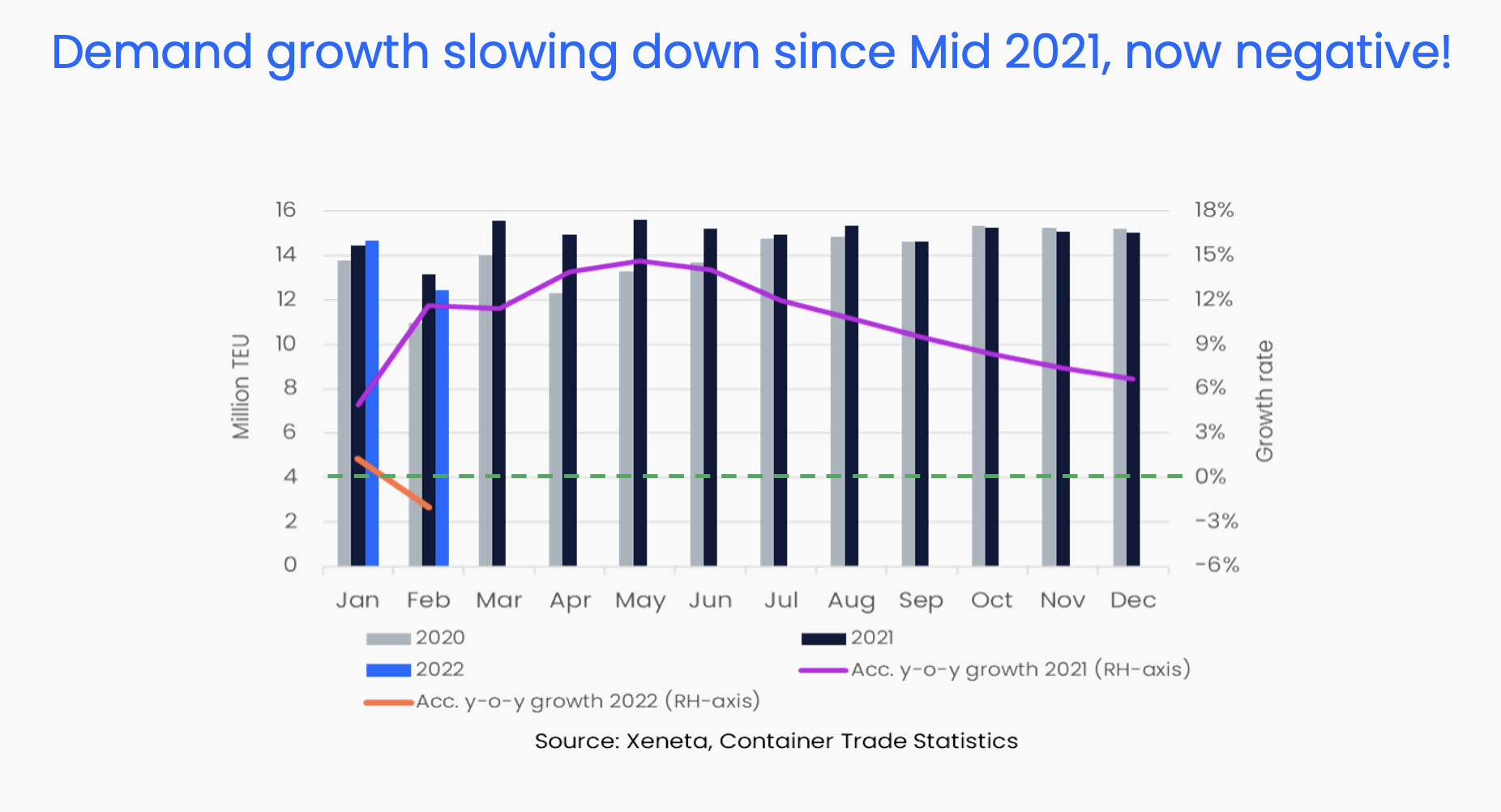 Supplier Negotiations
Supplier Negotiations
“It’s tough out there, but with the right intelligence, understanding and a flexible approach to tailoring solutions, you can at least achieve whatever competitive advantage is possible. Knowledge, as always, is power,” noted Xeneta CEO.
71% of our customers said they would try to renegotiate existing contracts with the current market status if given a chance. In contrast, 15% of customers want to break their currently negotiated contracts to look into better options/rates.
It is recommended that all parties involved in contract negotiations stay proactive and informed of the latest market moves to achieve value for their businesses.
Shippers Pushing To Establish Their Own LSPs To Mitigate Their Supply Chain Challenges
With stretched capacity, disruptions, carriers omitting port calls to focus on key terminals, and sky-high rates, shippers are increasingly moving to “take matters into their own hands.” However, operating an LSP from a BCO position will be tricky when the market softens and returns to normal, says Berglund.
The German retailer, Lidl, is now chartering three Panamax containerships and buying a fourth, sidestepping traditional channels to operate its own shipping line, Tailwind Shipping, most likely focusing on the Far East-Europe trade. It is a bold move, and only time will tell if it’s a success, potentially creating a blueprint for others to follow as shippers look for ways to free themselves from the grip of all-powerful carriers.
Want To Learn More?
Xeneta customers get access to monthly market commentary during the Ocean Freight Market Pulse Webinars. Learn more about the Xeneta platform and how to become a customer now.
%201.png)



